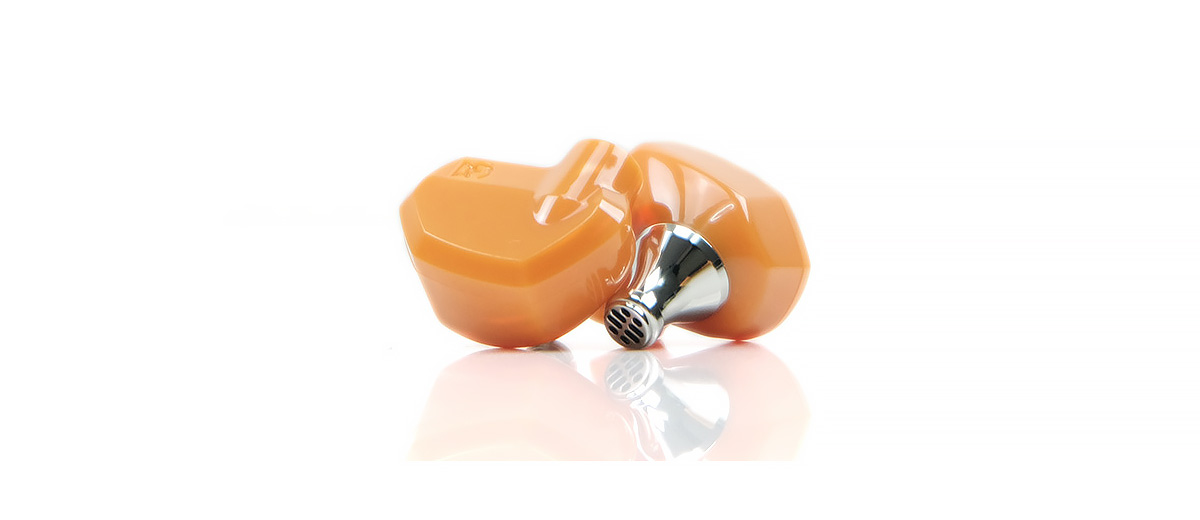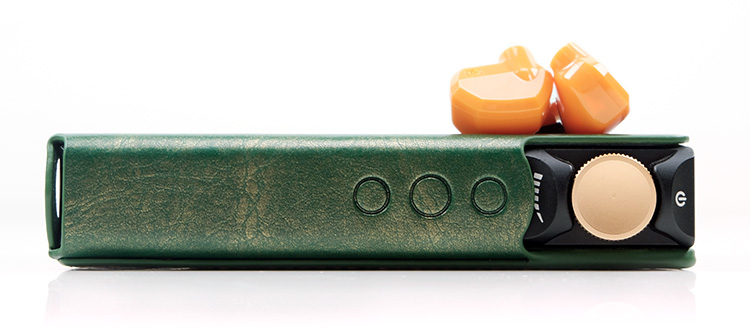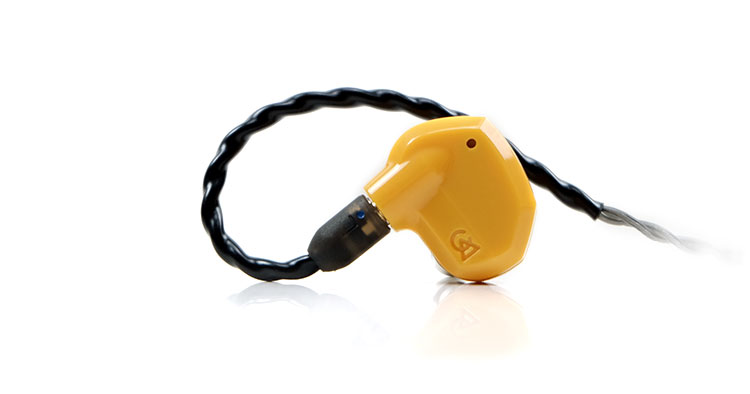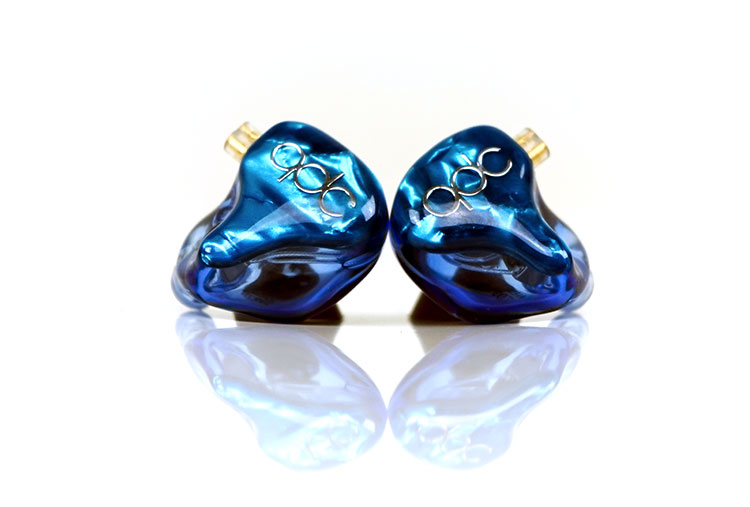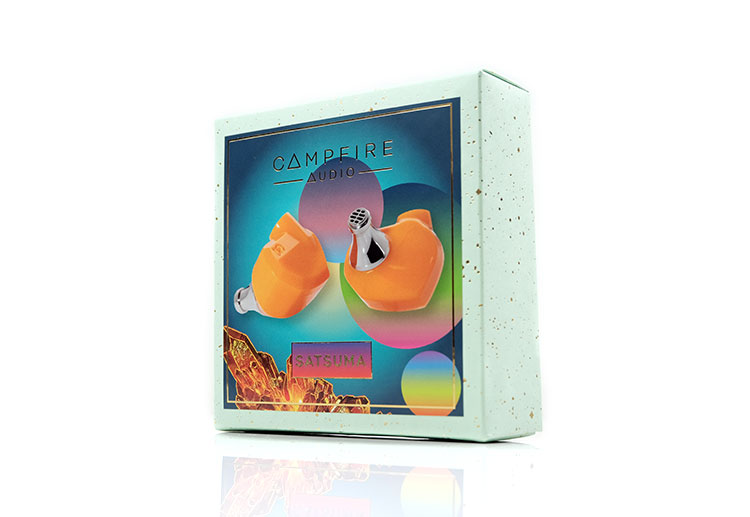Synergy
Efficiency
The Satsuma is slightly more demanding than you would expect at 46.4Ω and needing to 67Vrms to reach 94dB SPL. Those who are looking at Campfire Audio reviews for the first time will notice that CA does not use the usual dB SPL but rather a benchmarked Vrms rating to obtain 94dB at 1kHz.
That makes it slightly trickier to do a side-by-side comparison except with other CA IEMs. However, we do know that the Andromeda is an incredibly efficient monitor and it is rated at 7.01 mVrms, with the Solaris 2020 even more sensitive at 6.54mVrms.
Eagled-eyes long time readers will note, however, that the older Comet had a similar rating and was relatively harder to drive also at 48Ω and 97dB.
That is quite an SPL gap compared to the current line-up and combined with the higher impedance load you will definitely find you will need to up your volume on your source to get to a comfortable listening level.
Pairings
Whatever I said paired well with the Honeydew just flip it for the Satsuma and you are on the right track. The Satsuma likes a richer or warmer sounding source and amp or one with decent low-end power.
DAPs such as the ibasso DX160 will excel in micro detail and deliver a fairly excellent staging quality to the Satsuma but will leave the treble a little on the dry side and an upper mids timbre that leans way too much to the odd harmonic side.
That means percussion strikes, in particular, will sound very hard-edged and dominates the presence region upsetting the overall Satsuma tonal balance. It is simply too clean and bright to be a solid pairing.
A much more natural sounding partner is the HiBy R5, (not the Saber version). This is a thicker, warmer-sounding DAP with plenty of low-end grunt and some solid power to drive the Satsuma. It immediately fleshes the midrange timbre with some welcome bass solidity and dampens down on the treble shimmer to create a more accurate percussion and female vocal timbre.
The other attractive pairing was the Cayin N3Pro. A little similar to the R5 but slightly less weight on the bass and an airier sweeter sounding midrange tone with the tube output in Ultralinear mode. If you want a little more power you can switch to the solid-state output but at the cost of producing a cooler coloration.
Select Comparisons
All comparisons were completed using the stock cables and both the HiBy R5 and Cayin N3Pro DAPs as sources.
Campfire Audio Honeydew
$249
Technical
The Honeydew is Campfire’s summer of 2021 entry-level co-release along with the Satsuma and shares quite a lot of similar features.
However, internally the driver is very different with a single 10mm LCP diaphragm dynamic driver instead of a full range ported BA inside the Satsuma. That being said, both monitors use a 3D printed internal acoustic chamber and airflow system for improved ventilation and driver performance.
The spec sheet shows a fairly large gap between the two in terms of efficiency with the Honeydew requiring only 17.68 mVrms to hit 94dB at 1kHz SPL and the Satsuma much higher at 67 mVrms to hit the same dB marker. The impedance load is also a bit of a mismatch at 46.4Ω for the Satsuma and 17.44Ω for the Honeydew.
For the Honeydew that’s fairly consistent with Campfire’s usual dynamic driver configuration. The Satsuma is the outlier in the range for efficiency and in our real-world tests it did need more current and voltage to drive properly compared to the Honeydew. Background hiss is not an issue with either monitor with DAPs offering high the normal noise floors.
Design
The Honeydew and Satsuma are not miles apart when it comes to color schemes. The Honeydew using a spin on yellow called “Mellow Yellow” and the Satsuma aesthetic called “Orange fizz”. Compared to the Honeydew, the Satsuma visual is a little darker, more saturated with orange but in all other areas, both IEMs are the same.
That includes the miniaturized acrylic injection-molded ABS outer shell with the angular aesthetic and soft-to-the-touch curving as well as the very lightweight feel to each driver. Both IEMs have the new scaled-down stainless-steel spout with the same tip selection and a Smoky Lite 1.32m Litz SPC cable as stock.
Given the same form factor and dimensions, the comfort levels in the ear are both very good indeed. I have zero complaints there with their excellent balance and secure fit. The Satsuma does isolate better with the Final E tips but both are quite close using the foam tips.
Performance
Give the Satsuma uses a single BA and the Honeydew uses a single dynamic driver you should expect some very clear differences between these two IEMs. The Satsuma is lighter-bodied, clean in tone, and articulate whereas the Honeydew is weightier, warmer, and richer in texture but with more of a languid pace and longer decay.
Both have clear source preferences, at least for my tastes. The Honeydew does much better with a clean expansive sounding source such as the DX160 whereas the Satsuma felt more natural in tone with slightly warmer and beefier sources such as the original HiBy R5 and the smoother tube ultra-linear setting of the Cayin N3 Pro.
The core traits of the two, (Honeydew followed by Satsuma), are power over delicacy and expansiveness compared to intimacy. If you are shooting for a ‘big sound’, a planted performance with rich even harmonic texture then the Honeydew is going to give you a lot of that.
If you need something a bit more detail orientated, more intimate, and vocal orientated with extended highs then the Satsuma is the better choice. It pulls back on the overall warmth but importantly with smooth sounding sources it can retain a good natural tone, especially with brightly mixed vocals where natural sibilance can tip things over with a poor match.
qdc Neptune
$238
Technical
This is one of qdc’s most successful and affordable IEMs, the similarly priced Neptune that we reviewed back in 2018, (was $199, now $238). Like the Satsuma, the Neptune is a single BA driver implementation though I believe the driver used inside is not a ported build but rather a fully enclosed full range BA.
The logic behind that is in the technical specs with the Neptune rated at just 10Ω and 104dB SPL which is more sensitive than the 46.4Ω rating of the Satsuma single driver alternative.
SPL is not possible to compare side by side but in our real-world testing with the iBasso DX160, the Satsuma did require more current to achieve a similar level for comfortable listening, almost 10-12 steps more.
Design
Have to give props to qdc, they always do some wonderful designs, and the Neptune is no exception. Even as an entry-level offering is reeks of quality.
The Satsuma looks very different with its solid ‘orange fizz’ finish and it is a fair bit smaller in dimension with a slightly more rigid design flow. The Neptune is taller but also using a custom-style contouring finish and that beautiful transparent blue mic acrylic shell with the ‘ultramarine’ faceplate.
In terms of comfort and isolation, however, they are quite similar. Neither weighs that much but where they differ is the Satsuma takes up less of the concha basin in terms of contact placing more emphasis on the spout and tip to create the seal. The Neptune’s custom contours have more of a contact surface with an equally long spout.
The connectors are where the Satsuma has a clear advantage because of qdc’s insistence in reversing the polarity of their pins and placing them on protruding stems. For the stock 4-wire that is not an issue but it makes it really hard to roll the cable as the pins are reversed. Campfire uses its very solid beryllium/copper MMCX connectors which are universal and easy to roll for.
I am not a huge fan of the qdc stock cable build either. This is a 1.25m 4-core OFC in a PET braided wrap and is not as light or as supple as the Smoky Lite around the memory wire. Performance is fairly similar in terms of dynamic range, and it does use a 3-pole mic and remote control for Android and iOS users, however.
Performance
Different tuning philosophies here with qdc teasing out a bit more bass and upper treble amplitude over the Satsuma but offering a little less forwardness in the upper mids.
The Satsuma is flatter across the low-end save for a mild mid-bass hump for some warmth. While it also has a peak around 7k it’s not its highest peak so more of a secondary overtone. Where it peaks is around 2-3k which pushes higher pitching vocals a bit further forward than the Neptune and picks up a little of that treble overtone in the timbre.
Having said that the Neptune has the better instrumental and vocal fundamentals and will sound the more aggressive and weightier of the two monitors. This is the monitor to pick if you want a more forward and physical guttural or male vocal presence. Female vocals further up are not quite as airy on the Neptune and have a more rounded sounding denser timbre.
In terms of staging, the Neptune has a better sense of depth and punch, whereas the Satsuma has a more open and stretched midrange with vocals to the fore and instruments tucked in behind, especially for higher pitching voices.
The Neptune has slightly less of a perceived treble overtone so whilst neither are hugely spacious with similar extension in the highs the Satsuma’s flatter bass allows the treble makes its presence felt a bit more.
Arc Pollux
SGD 399
Technical
Slightly on the high end of the scale of affordability, the Arc Pollux is also a single driver universal monitor and reviewed by us in late 2018. Inside, much like the Satsuma, it also uses a single ported full-range BA, the Knowles ED-26805, and much like the Satsuma, it does require a bit more power than an enclosed BA design.
The rated spec of the Arc Pollux is not quite as high as the Satsuma but by today’s standards fairly high at 28Ω impedance. Its SPL, though not comparable side by side on paper, is fairly reasonable though at 109dB SPL.
That being said, in our real-world tests, the current demand gap between the ARC Pollux and the Satsuma was not that big using the SE output of the iBasso DX160 in low gain mode. I would say roughly 4-5 steps to get a volume match. The main difference is thereafter with the Satsuma less sensitive in volume adjustments when you go further up the scale.
Design
Hugely contrasting designs with the Pollux coming in an acrylic hollow body quasi-custom design and a monotone piano black with a single red dot to the connector side. The Satsuma, on the other hand, is much smaller, brighter toned with its orange fizz color scheme, and slightly lighter.
The Satsuma ABS shell is more rigid but gets away with it because of its lack of girth meaning very little of it touches your ear’s bumps and curves and that mini-spout and set of tips doing most of the sealing work.
The Pollux contouring means you get more contact area with the ear but has plenty of aggressive contouring to ensure it is very comfy with little in the way of uncomfortable pressure. Its super long nozzle also goes quite deep making it less reliant on the tip of isolation.
Both are BA designs so no venting ports so both have above average seal but that nozzle depth on the Pollux blocks out noise just a shade better than the Satsuma.
Whilst both cables are quite light, ARC has opted to go for a dreary old school 2-pin Plastics One type 4-core OFC cable with a stiff memory retentive memory coating. The Smoky Litz Lite cable with the Satsuma has a better finish with the more supple memory coating and feels more comfortable around the ear as a result.
Performance
The Pollux delivers more of a high-fidelity tone with a strong emphasis on clarity and an ethereal quality to its treble delivery. The note weight is light, pristine but pure, and airy with a nice black background.
The Satsuma is a bit more ‘filled in’ shall we say with a more natural warmer timbre on the low-end up. There is also a bit more of a mid-bass hump and delivers more punch and solidity on the low-end.
Midrange timbre follows a similar theme with the Satsuma offering a bit more body and the Pollux going for a more delicate shimmery tone. Arc has dipped the mids a little from 2-4k to cut out any harshness creeping into the vocal delivery from its treble energy. You get plenty of contrast but not so much sibilance.
CA, on the other hand, has pushed that range much further forward so it does pick up a bit more on its 7k peak but the better warmth on the low-end balances it out. You get a more forward vocal presence but not quite as much clarity and separation as the Pollux midrange.
The Pollux’s staging is colored by that midrange dip and upper treble peak so it sounds tall and airy. The Satsuma peaks just marginally lower in the treble so not as airy but stronger on the mids presence and firmer on the low-end.
Our Verdict
The Satsuma is a tastefully tuned single BA monitor that sets itself apart from some of the competition by avoiding sounding too clinical or ethereal in its coloration. This is a performance imbued with a delicate balance between natural warmth and that trademark BA penchant for speed and clarity.
As with the Honeydew, it is source-specific and tip sensitive also for that matter. Keep the source smooth and natural sounding with plenty of punch and the Satsuma responds in kind with a very likable harmonic balance. Tip it to the cold and airy side and it sounds too brittle for my tastes, especially if you want to use the Final E tips to maximize that bass ‘bounce’.
Overall, a nice and clear alternative to the bombastic bass-heavy Honeydew with an articulate focused delivery for those who like a bit more nuanced listening.
Campfire Audio Satsuma Specifications
- 5Hz–18 kHz Frequency Response
- 94 dB SPL @ 1kHz: 67 mVrms
- 46.4 Ohms @ 1kHz Impedance

